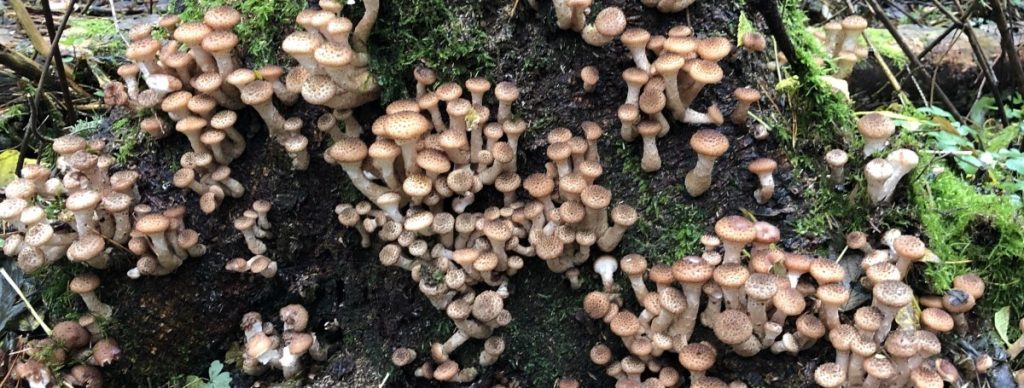Parasitic fungi are complex and intriguing but can be destructive, giving them a bad reputation.
But, while parasitic fungi may be problematic in monoculture plantations and orchards, they play an important role in healthy, diverse ecosystems.
They generally invade old or weak trees and, by killing them, provide light for younger plants and dead and decaying wood for other fungi to feed on.
These fungi then break down the dead wood and create compost that improves the soil and provides nutrients for new plant growth.
Ready to learn more about these intriguing organisms?
Read on to discover what parasitic mushrooms are, what they feed on and how they differ from other types of mushrooms.
You’ll also find examples of some common edible and medicinal parasitic mushrooms.
What Are Parasitic Mushrooms?
Parasitic mushrooms are the fruiting bodies of parasitic fungi that get the nutrients they need to survive from a living host.
Parasitic fungi invade and feed on other living organisms, including plants, animals, insects and other fungi.
They extract nutrients from the organism’s living tissue, often causing damage and sometimes killing the host.

Are Most Fungi Parasites?
Parasitic fungi are not the largest group of fungi, meaning most fungi are not parasites.
Fungi use various methods to get the nutrients they need to survive, and scientists have used this to classify them into four groups:
- Saprotrophic
- Mycorrhizal
- Parasitic
- Endophytic
The largest group is saprotrophic fungi, followed by parasitic fungi, then mycorrhizal fungi, and, lastly, the endophytes.
Although scientists are still exploring endophytic fungi and new species are constantly being discovered changing the size of this group.
Some mushrooms use more than one method to get the nutrients they need and fall into more than one of the groups above.
What is the Difference Between Parasitic Fungi and Saprotrophic Fungi?
Parasitic fungi and saprotrophic fungi both use external digestion and get their nutrients by decomposing organic matter that they then absorb through their hyphae.
But, there is one key difference, saprotrophic fungi decompose dead and decaying organic matter, while parasitic fungi feed on organic matter in living organisms.
Are Most Mushrooms Saprotrophs or Parasites?
Most mushrooms are saprotrophs, and the few parasitic fungi that do produce mushrooms are often both saprotrophic and parasitic.
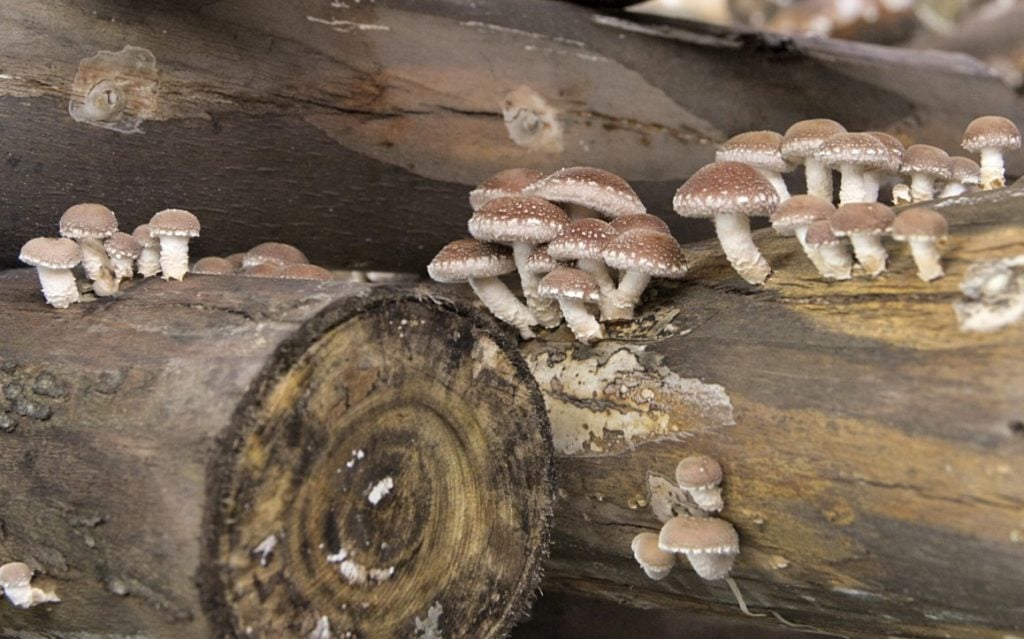
What is the Difference Between Parasitic Fungi and Mycorrhizal Fungi?
Both parasitic and mycorrhizal fungi form relationships with other organisms to get nutrients.
The main difference is that mycorrhizal fungi form mutually beneficial relationships, where both the fungi and the host benefit.
While in parasitic relationships, only the fungi benefit, and the host is often harmed.
What do Parasitic Fungi Feed on?
Parasitic fungi feed on a range of living organisms, including plants, animals, insects, and even other fungi.
Mycologists call the parasitic fungi that use plant hosts phytopathogenic fungi, and mildews, rusts and smuts are some of these.
Phytopathogenic fungi form mycelial networks inside the tissue of their plant hosts and absorb food from the host’s cells.
Most parasitic fungi feed on plants, but you also get entomopathogenic fungi that live off insects and zoo-pathogenic fungi that need animal hosts.

Do all Parasitic Fungi Produce Mushrooms?
Most parasitic fungi are tiny and don’t produce mushrooms, but a few species do.
However, many of these use more than one feeding method, and most mushroom-producing parasitic fungi are also saprotrophic.
Can You Eat Parasitic Mushrooms?
Few true parasitic mushrooms are edible, but some semi-parasitic species produce well-known gourmet mushrooms.
In the section below, we’ll look at some common edible and medicinal parasitic mushrooms.
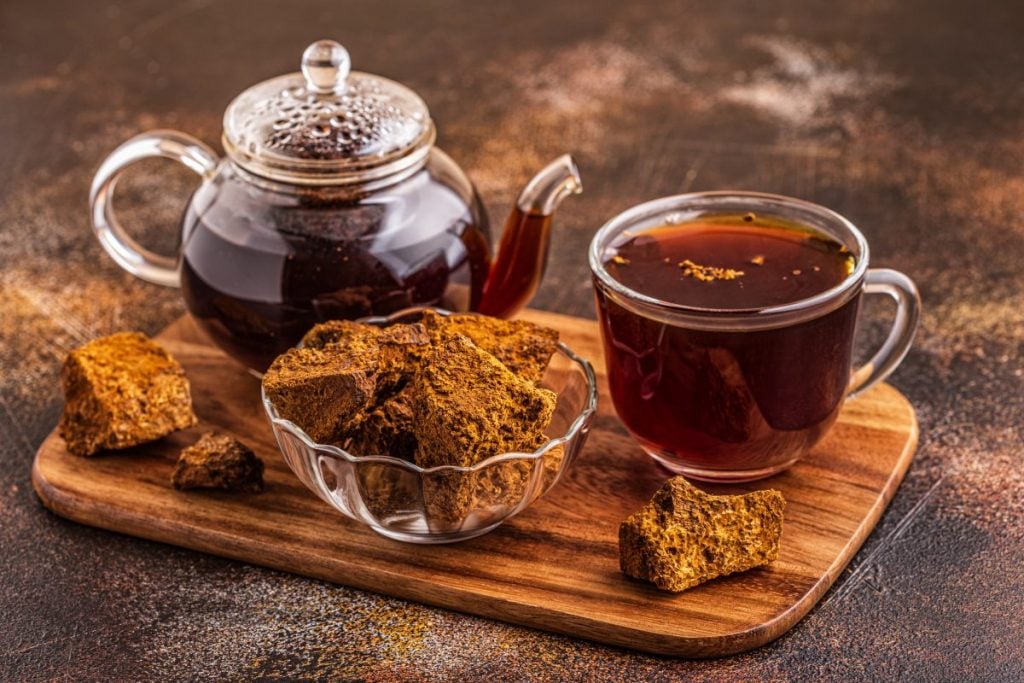
Examples of Parasitic Mushrooms
While many parasitic fungi are detrimental to their hosts and don’t produce desirable mushrooms, a few are worth noting.
Here are some common edible and medicinal parasitic mushrooms:
1. Lion’s Mane (Hericium erinaceus)
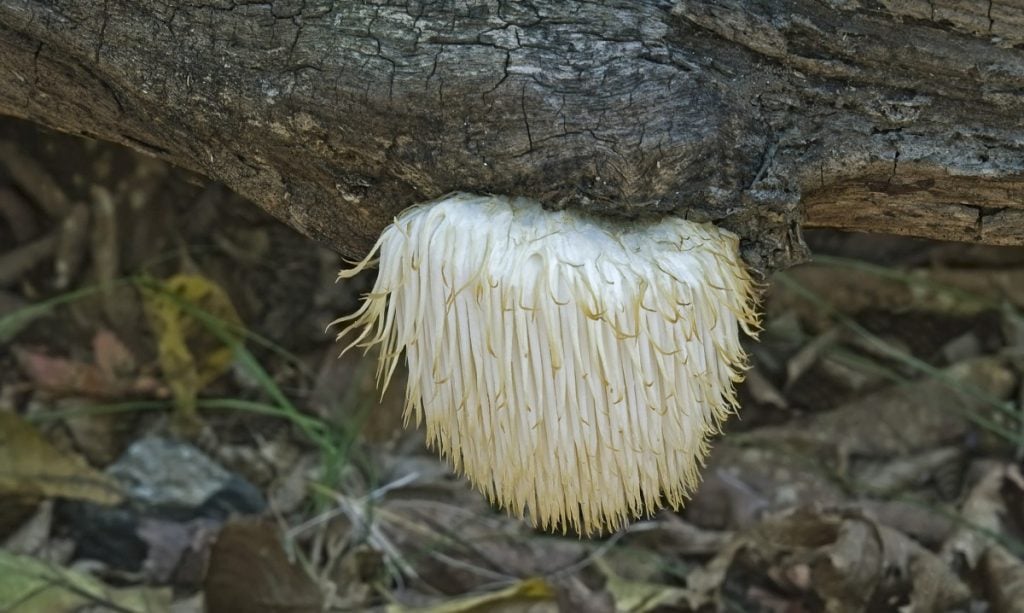
In the wild, you’ll find lion’s mane mushrooms growing on dead trees and logs and from wounds high up on living trees. Because of this, they’re classified as saprotrophic and parasitic.
These unique mushrooms are not only unusual because of their shaggy-looking teeth but are also one of the few potent medicinal mushrooms that are safe to eat in large quantities.
They have a mild, slightly sweet flavor that many describe as similar to crab or lobster and a meat-like texture that makes them a delicious meat substitute in vegan and vegetarian dishes.
Lion’s mane mushrooms have several health benefits, and studies have shown they can improve cognitive abilities, boost the immune system and help reduce inflammation.
They’re also one of the easiest mushroom species to grow at home, and you can grow them in bags of hardwood sawdust or outdoors on freshly cut logs.
2. Poplar Mushroom (Cyclocybe parasitica)
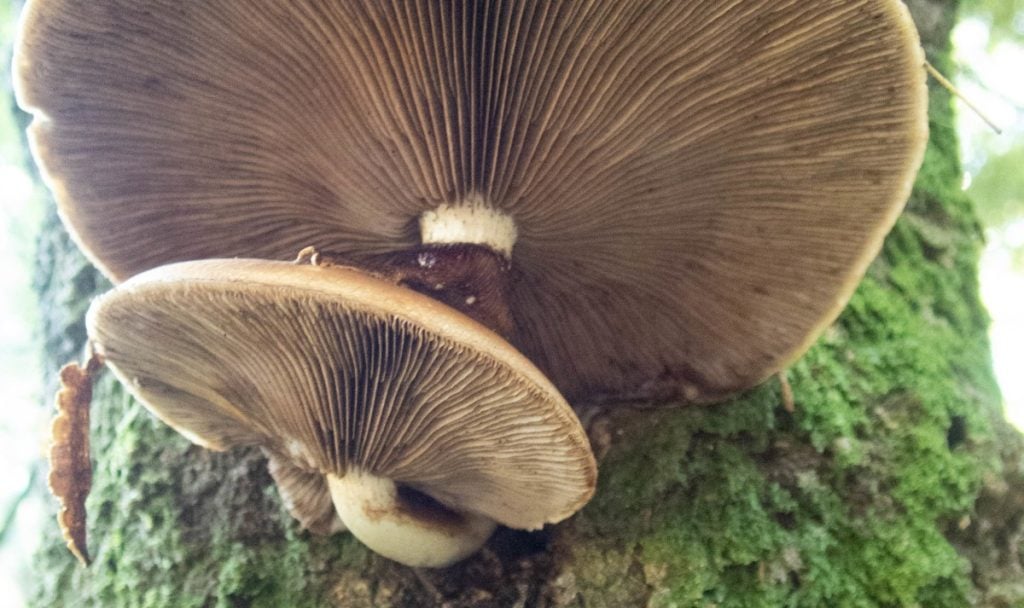
Poplar mushrooms are large edible mushrooms found in New Zealand and Australia that grow saprotrophically and parasitically on various trees.
They’re classified as semi-parasitic and usually grow on weak or unhealthy trees, causing heart rot that kills the tree.
Poplar mushrooms are best known for their culinary applications and have a meaty texture and delicious, savory, umami flavor.
The easiest way to grow these mushrooms is outdoors on logs, but you can also grow them indoors on hardwood sawdust or wood chips.
3. Elm Oyster Mushroom (Hypsizygus ulmarius)
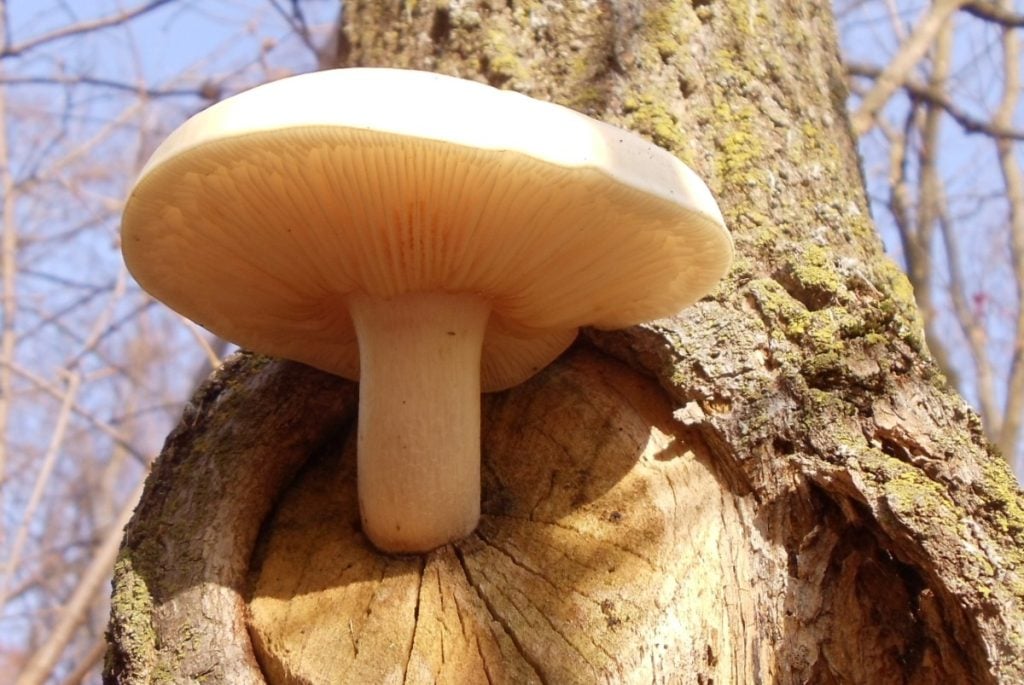
In the wild, you’ll typically find elm oyster mushrooms growing alone or in small groups high up in branch scars and wounds on living elms and box elders.
Scientists classify elm oyster mushrooms as parasites and saprotrophs, as they’re unsure whether they feed on living or dead tissue on the host trees.
Although not true oyster mushrooms, elm oysters are also prized edible and medicinal mushrooms that you can grow at home on straw or sawdust blocks.
They have a firm, meaty texture, delicate aroma and mild, slightly nutty flavor.
And are also packed full of nutrients and active compounds with antioxidant, anti-inflammatory, and antitumor properties.
4. Chaga (Inonotus obliquus)
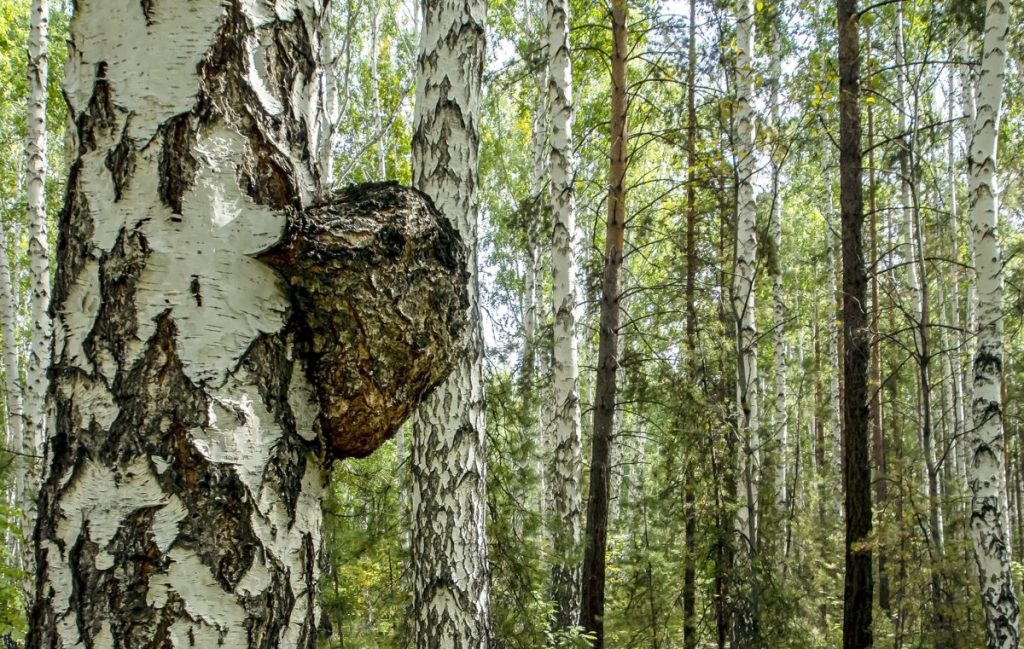
Chaga is a parasitic fungus that’s sought after for its impressive medicinal compounds.
It has a mild, slightly fruity flavor with undertones of vanilla and is commonly ground into a powder and used to make tea.
You’ll usually find this strange-looking fungus growing on birch trees in cold climates, and the rigid, black structure you see is a mass of tightly packed mushroom mycelium called a sclerotium.
Chaga uses wind dispersal to spread its spores to new trees, and they get inside the tree through wounds in the bark.
Chaga is slow growing, taking 3 to 5 years to form and up to 20 years to weaken the host until the tree eventually disintegrates from the inside out and dies.
Many of chaga’s beneficial medicinal compounds require a relationship with a host birch tree to form, and cultivated chaga does not have the same properties.
5. Lobster Mushroom (Hypomyces lactifluorum)
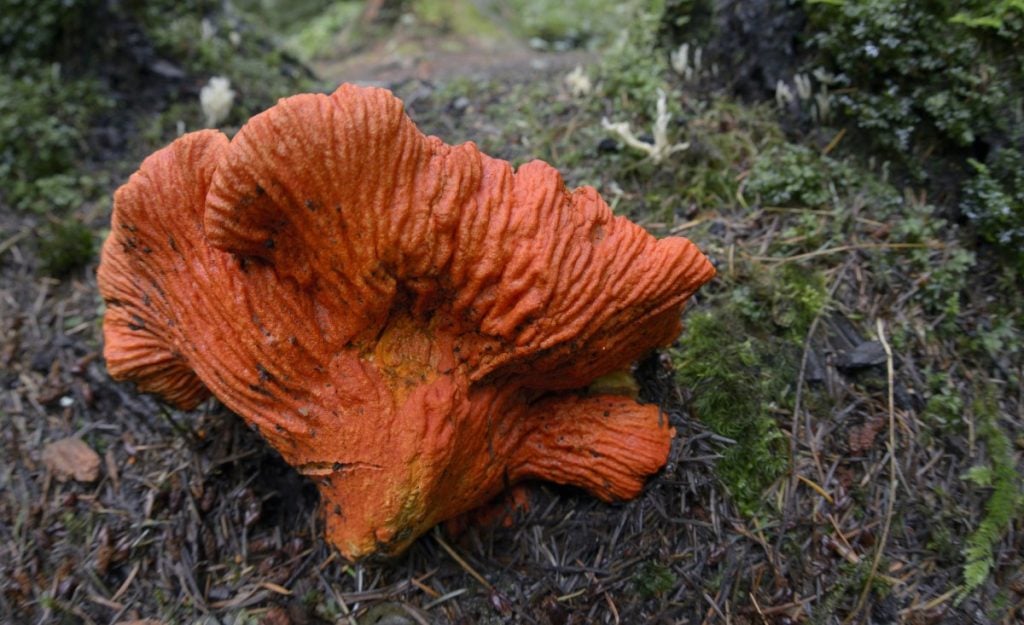
Lobster mushrooms are unusual edible mushrooms created when a parasitic fungus, Hypomyces lactifluorum, feeds on the mushrooms of another fungus.
Hypomyces lactifluorum typically infects the white fruiting bodies of Russula brevipes and Lactarius piperatus and covers them in a reddish-orange crust that resembles a lobster’s shell.
The parasite alters the host mushroom’s color, texture, shape and taste and turns them into a delicious edible mushroom with a firm, dense texture, seafood-like flavor and strong aroma.
6. Honey Fungus (Armillaria mellea)

There is more than one type of honey fungus, and they’re all aggressive parasites that feed on coniferous and broad-leaf trees.
By the time you see their golden yellow fruiting bodies, there is usually a great deal of internal damage in the host tree.
The honey fungus creates a network of black, bootlace-like rhizomorphs that you can easily see under the bark of dead and dying trees.
These strong rhizomorphs protect the mycelium and allow the fungus to spread throughout a tree and travel through the soil for several meters to reach the next tree.
Once the host tree dies, the honey fungus becomes a primary decomposer and breaks down the dead and decaying wood.
Thus honey fungi, like many other parasitic fungi that produce mushrooms, are both parasitic and saprotrophic.
Many people consider young honey fungus mushrooms a delicious treat, but they must be well-cooked before you eat them.
As honey fungus sometimes causes gastric discomfort, it’s best to try a small amount and wait 24 hours to see if you have any adverse symptoms.
7. Caterpillar Fungus (Ophiocordyceps sinensis)
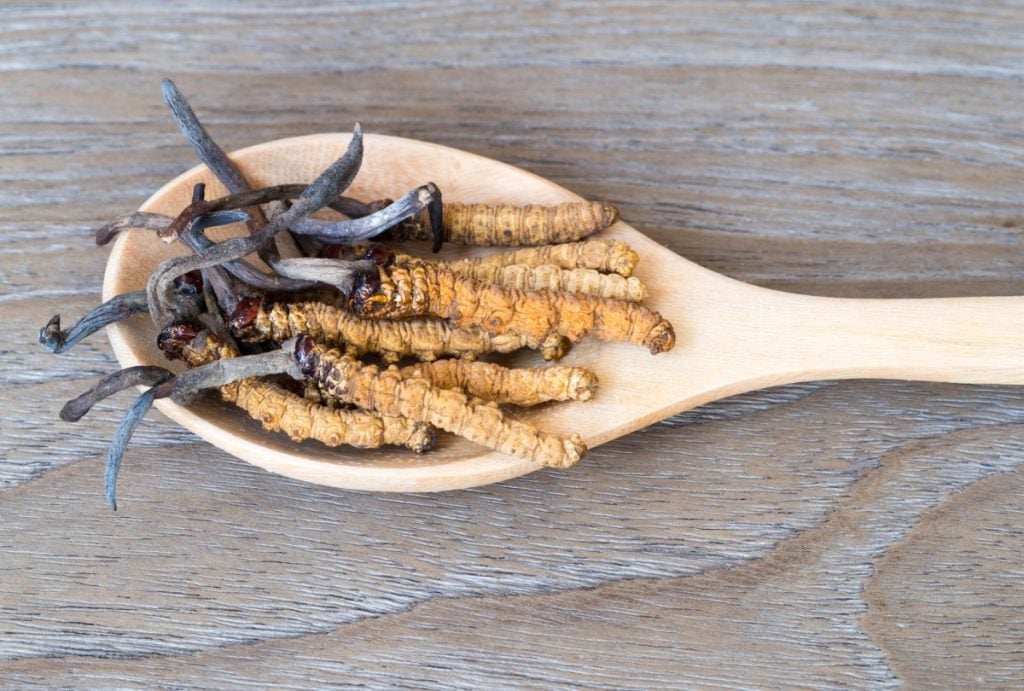
Also known as yartsa ganbu, the caterpillar fungus is a mushroom-producing parasitic fungus that feeds on insects.
It infects a specific species of caterpillar, kills them and uses the nutrients they provide to produce a small mushroom that grows out of the dead caterpillar’s head.
Their mycelium and fruiting bodies provide several sought-after health benefits, making them one of the most expensive mushrooms in the world.
They’re also believed to be an aphrodisiac, and as they’re hard to find and expensive, many people consider eating them a status symbol.
Are Truffle Mushrooms Parasitic?
Truffles are not parasitic. They’re ectomycorrhizal fungi that form mutually beneficial relationships with the roots of several trees, including oak, pine, poplar, birch, hazel and beech.
There are several types of truffles found worldwide, but the most well-known are the black and white truffles commonly found in Europe.
Unlike mushrooms, truffles grow entirely underground, but like other mycorrhizal mushrooms, they get simple sugars from the trees and, in exchange, provide valuable nutrients.

Are Oyster Mushrooms Parasitic?
Oyster mushrooms are not parasitic. They’re saprotrophic, meaning they feed on dead and decaying organic matter.
And the decaying organic matter they enjoy the most is wood. As primary decomposers and wood decay fungi, they’re specialists at breaking down lignin and cellulose.
But wood is not the only thing that oyster mushrooms eat. You can grow oyster mushrooms on many substrates, including straw, cardboard, coffee grounds and even books.
Although oyster mushrooms are primarily saprotrophs, they’re also one of the few carnivorous mushrooms.
Their mycelium secretes a toxin that paralyzes microscopic nematodes (roundworms). These worms are then digested externally and absorbed by the hyphae.
Mycologists believe oyster mushrooms use the worms to get additional nitrogen, as woody substrates often lack nitrogen.
Final Thoughts
Parasitic fungi are not all bad and play an important role in natural ecosystems.
Most parasitic fungi are tiny and don’t produce fruiting bodies, but a few parasitic and semi-parasitic fungi are well-known for their gourmet and medicinal mushrooms.
Some semi-parasitic fungi also feed on dead and decaying organic matter, and you can grow these species at home.
To learn more about growing mushrooms, visit our Mushroom Growing Hub or sign up for one of our mushroom cultivation courses.
